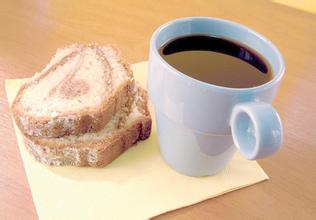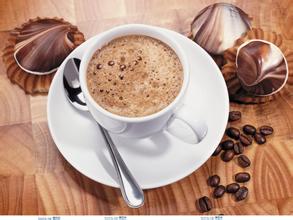Introduction to the characteristics of Southern Puerto Rico Coffee (Larez Coffee)
Flavor: full granule, full flavor, rich aroma
Suggested baking method: medium baking
★★★: excellent

The market for coffee:
Today, Puerto Rican gourmet coffee has been exported to the United States, France and Japan. Coffee in this country is generally carefully cultivated with pure flavor, aroma and heavy granules, among which the best is among the world's famous brands. Relevant U.S. government staff, such as FDA and USDA, will also be present when the goods are submitted, and their job is to monitor producers' compliance with federal regulations. There are also staff from local evaluation boards who take 1 bag out of every 50 bags as samples and use international gauges to identify the characteristics of Puerto Rican coffee:
Yaocote selected is a fascinating coffee, it has a complete flavor, no bitterness, rich nutrition, rich fruit, and is worth tasting. Even Thales (Taylors) in Harrogate, England, has imported 50 bags of Yaoke specialty coffee from Puerto Rico:
The best coffee in Puerto Rico is YaucoSelecto, which means "Selecto". Grand Larez and Yaoke coffee (GrandLares-Yauco) are produced in the southwest of the island, while Larez coffee is produced in the south-central part of the island. Yaocote's choice of coffee, which is grown only on three farms in the southwest of the island, is fragrant and has a long aftertaste. This kind of coffee is very expensive and its flavor is comparable to that of any other coffee variety in the world. In the Yauco area, the coffee is owned and operated by local planters. The mountain climate here is mild, the plants have a long mature period (from October to February), and the soil is of high quality clay. Some old varieties of Arabica coffee beans are grown here, although the yield is lower than other varieties, but generally of high quality. People here have been using an ecological and intensive planting method, using only some low-toxic fertilizers and chemicals, and taking mixed crop planting measures to make the soil more fertile. When it comes time to pick coffee beans, people walk through the coffee trees, picking only fully ripe coffee beans, and then wash them in a roller device for 48 hours. Yaocote chose coffee beans that were preserved in shells before they were shipped and were not peeled off until they were ordered and shipped to ensure the best freshness of the coffee. In 1736, the coffee tree was introduced from Martinique to PuertoRico. Most of the early coffee was grown by immigrants from Corsica. Coffee farms were once prosperous in the 19th century, but the rise of sugarcane and food farming and the impact of hurricanes and wars have made the coffee industry lag behind and are now recovering.
Important Notice :
前街咖啡 FrontStreet Coffee has moved to new addredd:
FrontStreet Coffee Address: 315,Donghua East Road,GuangZhou
Tel:020 38364473
- Prev

Jamaica Blue Mountain Coffee Variety and quality Manor (Valenford Manor)
Quality coffee editor suggested dosage: about 10-15g Blue Mountain Coffee Powder per cup, brewing 6-8oz coffee. To use a siphon pot to brew Blue Mountain Coffee: the first step is to grind the beans, fineness: 4.5 step 2. The filter under the hook should avoid a gap between the filter and the glass container, because the gap will not only cause the coffee powder to fall into the water below. it will also make the container leak and affect the extraction effect.
- Next

Galapagos Coffee Variety-San Cristobal region
Galapagos Islands Coffee features: coffee produced in the Galapagos Islands (Galapagos Islands) is a treasure of coffee with excellent quality and is grown without any chemical agents. Flavor: rich taste, sweet and sour suggested baking method: medium roast ★★★: excellent Galapagos Islands Coffee Market: due to the history of the Galapagos Islands
Related
- Does Rose Summer choose Blue, Green or Red? Detailed explanation of Rose Summer Coffee plots and Classification in Panamanian Jade Manor
- What is the difference between the origin, producing area, processing plant, cooperative and manor of coffee beans?
- How fine does the espresso powder fit? how to grind the espresso?
- Sca coffee roasting degree color card coffee roasting degree 8 roasting color values what do you mean?
- The practice of lattes: how to make lattes at home
- Introduction to Indonesian Fine Coffee beans-- Java Coffee producing area of Indonesian Arabica Coffee
- How much will the flavor of light and medium roasted rose summer be expressed? What baking level is rose summer suitable for?
- Introduction to the characteristics of washing, sun-drying or wet-planing coffee commonly used in Mantenin, Indonesia
- Price characteristics of Arabica Coffee Bean Starbucks introduction to Manning Coffee Bean Taste producing area Variety Manor
- What is the authentic Yega flavor? What are the flavor characteristics of the really excellent Yejasuffi coffee beans?

